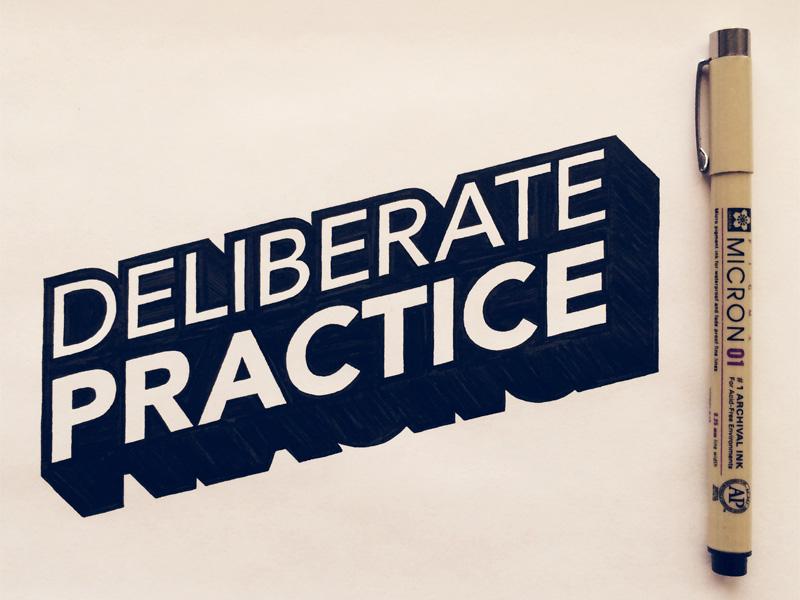Introduction: Why FAANG Interviews Feel Like a Black Box (and How They’re Actually Structured Behind the Scenes)
For many software and ML engineers, a FAANG interview feels like a mysterious black box, a process that’s supposedly objective yet often feels unpredictable. You can solve a problem cleanly, communicate well, and still walk away with a rejection. On the other hand, some candidates seem to breeze through with quiet confidence and walk out with an offer.
So, what’s really going on behind the curtain?
The truth is, FAANG interviews are not random. They’re governed by a surprisingly rigorous and standardized internal system that teaches interviewers how to evaluate candidates in a consistent, bias-minimized way. Every interviewer you meet, from the new engineer at Meta to the senior bar raiser at Amazon, goes through formal training, mock evaluations, and calibration sessions before they ever speak to a candidate.
At companies like Google, Meta, and Amazon, this training is designed to ensure that evaluation isn’t subjective. Each interviewer learns to identify what’s called “signal”, the measurable, repeatable evidence of ability, and separate it from “noise”, such as personality, luck, or small variations in question difficulty.
That’s why even when two candidates answer differently, interviewers can still rate them similarly, because they’ve been trained to measure how someone thinks, not just what they know.
FAANG interviewer training is built on four key principles:
- Consistency: Every interviewer follows the same rubric and scoring logic.
- Fairness: Feedback is anonymized and calibrated before final decisions.
- Clarity: Candidates are evaluated for structured reasoning, not performance theatrics.
- Signal extraction: The goal is to find evidence of long-term potential, not momentary brilliance.
This system is why large-scale hiring at FAANG remains remarkably reliable despite thousands of interviews every month.
As explained in Interview Node’s guide “Unspoken Rules of ML Interviews at Top Tech Companies”, the process isn’t designed to trick you, it’s designed to reveal whether you can reason like an engineer who thrives in high-ambiguity, high-impact environments.
Understanding how these interviewers are trained doesn’t just demystify the process, it gives you a strategic edge. Once you know what “signal” looks like from the other side of the table, you can shape your responses to surface it clearly.
Because at FAANG, it’s not the candidate with the most perfect code who gets the offer, it’s the one who communicates structured insight under pressure, just like the interviewers are trained to detect.
Section 1: The Hidden Layer, How Interviewer Training Works
Before an engineer ever becomes an interviewer at a FAANG company, they must go through a formal certification and shadowing process, one that’s almost as selective as the interviews themselves. The reason is simple: interviewer decisions directly shape company culture, hiring velocity, and long-term team quality.
Each interviewer is trained not only to evaluate technical skill but to do so consistently and without bias. That’s why the process isn’t informal or improvised, it’s a structured framework designed for fairness, repeatability, and precision.
a. The Certification Process
New interviewers begin by observing (“shadowing”) live interviews conducted by certified leads. During this phase, they learn how to:
- Ask probing follow-up questions that reveal reasoning depth.
- Maintain a neutral tone to avoid influencing candidate confidence.
- Capture evidence-based notes rather than personal impressions.
After several shadow rounds, the trainee runs a few mock interviews under supervision. Their feedback is reviewed and scored by existing bar raisers. Only when they can consistently produce aligned evaluations, meaning their scores match those of senior interviewers, are they cleared to conduct official interviews.
This training ensures that every interviewer across Amazon, Meta, or Google is calibrated to recognize the same quality signals.
b. Signal vs. Noise Training
One of the most important lessons interviewers learn is to separate “signal” from “noise.”
Signal refers to clear evidence that a candidate demonstrates a competency, for example, structured problem decomposition or clear communication of trade-offs.
Noise is everything else, candidate nerves, personality quirks, or stylistic differences.
Interviewers are repeatedly reminded that friendliness, confidence, or charisma should never override demonstrated skill.
c. Standardization and Rubrics
Every FAANG company uses structured rubrics to minimize variance in scoring. For coding interviews, this might include categories like:
- Problem comprehension
- Algorithmic efficiency
- Code correctness
- Communication clarity
Behavioral and system design interviews have their own scorecards with weighted competencies.
By aligning every interviewer around these rubrics, companies ensure that even across regions and teams, hiring decisions remain consistent and fair.
As highlighted in Interview Node’s guide “FAANG ML Interviews: Why Engineers Fail & How to Win”, interviewers are trained to extract evidence, not to judge intuition. You don’t need to be flawless, you just need to make your reasoning traceable.
Section 2: What FAANG Really Measures, Beyond Code and Syntax
One of the biggest misconceptions candidates have is that FAANG interviews are purely technical.
Sure, algorithms, data structures, and ML concepts matter, but interviewers are trained to evaluate how you think, not just what you know.
The internal FAANG training materials often describe the interview’s purpose as “signal extraction”: surfacing reliable evidence of skills that predict long-term success, such as structured reasoning, composure under pressure, and collaboration awareness.
a. The Four Universal Pillars of Evaluation
Every major FAANG company, regardless of its unique culture, uses variations of four universal pillars to evaluate candidates:
- Technical Ability, Can you write clean, correct, and efficient code or design robust systems?
- Problem-Solving Process, How clearly do you frame problems, reason through constraints, and adapt when challenged?
- Collaboration & Communication, Do you articulate trade-offs clearly, listen to input, and explain your thought process logically?
- Impact Potential, Can you connect your solutions to user outcomes or product value?
These pillars underpin all rubrics. A technically perfect solution with poor communication scores low, and a partial solution with clear structure can still pass if the reasoning shows growth potential.
b. How Interviews Are Designed Around These Pillars
Each interview type targets different aspects of the four pillars:
- Coding interviews test algorithmic depth and composure.
- System design interviews assess architecture reasoning and scalability thinking.
- Behavioral rounds evaluate ownership, leadership, and interpersonal maturity.
This multi-round structure ensures that no single weakness (say, missing an edge case) overshadows your total signal. Interviewers are told: “Hire for strength, not the absence of weakness.”
c. What Candidates Often Miss
Many engineers over-optimize for solving problems fast, thinking speed equals competence.
In reality, FAANG interviewers are taught to reward clarity, not velocity.
They look for well-organized reasoning, outlining trade-offs, stating assumptions, verifying edge cases.
A candidate who takes 20 seconds to pause, clarify, and structure their approach is demonstrating maturity, something interviewers are explicitly trained to recognize as a positive behavioral signal.
As explained in Interview Node’s guide “Cracking the FAANG Behavioral Interview: Top Questions and How to Ace Them”, every response you give is judged not in isolation, but as evidence of your thinking style.
The best candidates know that FAANG interviews measure how you reason, not how you react.
Section 3: The Calibration Process-Where Consistency Meets Fairness
Behind every FAANG interview, there’s an invisible layer of structure that ensures one simple truth:
no single interviewer determines your fate.
Every interviewer’s feedback is reviewed, normalized, and discussed in calibration sessions, structured meetings where bar raisers and hiring committees evaluate the evidence, not the personality.
This is what makes FAANG hiring consistent, even across hundreds of interviewers and thousands of candidates per year.
a. How Calibration Actually Works
After each interview, your interviewer writes detailed feedback within 24 hours.
They log:
- The questions asked,
- What signals they observed,
- How those signals mapped to competencies, and
- A numerical rating (usually 1–4 or 1–5 scale).
But here’s the key: these scores aren’t final.
Hiring committees compare ratings from multiple rounds, looking for patterns and cross-validation.
If one interviewer scores you unusually high or low, others’ feedback helps correct for bias.
The goal isn’t to average your performance, it’s to interpret the total signal.
b. The “Bar Raiser” System
Companies like Amazon formalized this process through the Bar Raiser role, senior interviewers trained to maintain a consistent hiring standard across teams.
Bar Raisers:
- Participate in interviewer training and calibration sessions.
- Ensure that hiring decisions align with company-wide benchmarks.
- Have veto power if they detect bias or inconsistency.
This system keeps hiring quality high and prevents team-level compromises.
If a manager wants to “make an exception,” a Bar Raiser steps in to enforce fairness.
c. Why It’s a Double-Edged Sword
Calibration makes the process fair, but it can feel opaque to candidates.
Sometimes, you can perform well technically but fall short of the consistency threshold, meaning your performance didn’t demonstrate strong enough evidence across multiple competencies.
This is why engineers often feel confused after “good” interviews that still lead to rejection, they don’t realize calibration evaluates patterns, not moments.
As pointed out in Interview Node’s guide “Career Ladder for ML Engineers: From IC to Tech Lead”, the calibration mindset mirrors how leadership promotions work inside FAANG: consistent, repeatable impact outweighs single outstanding performances.
That’s the same principle behind how FAANG interviewers are trained to decide, they look for reliability, not randomness in your excellence.
Section 4: Technical Rounds-How Evaluation Rubrics Actually Work
If you’ve ever wondered how interviewers “score” your coding or ML interview, here’s the truth: they’re not grading your final answer like a school exam, they’re measuring how you think under structured uncertainty.
FAANG interviewers use detailed evaluation rubrics that break performance into multiple dimensions. These rubrics are standardized across teams to ensure consistency and are designed to measure process, not personality.
So when an interviewer is typing notes furiously during your session, they’re not documenting your mistakes, they’re capturing signals of specific competencies.
a. The Anatomy of a Coding Rubric
A typical FAANG coding rubric includes these categories:
- Problem Understanding: Did the candidate restate the problem clearly and clarify assumptions?
- Approach: Did they explore trade-offs or jump straight into coding?
- Correctness: Does the code handle edge cases, nulls, and large inputs?
- Efficiency: Is the time and space complexity well reasoned?
- Communication: Did they articulate their logic cleanly throughout?
Each category is rated individually. You could fail to finish coding but still earn a “Strong Hire” if your reasoning and communication show exceptional clarity, a concept interviewers are trained to prioritize over syntax perfection.
This is why some candidates who “don’t finish” still pass, because interviewers see strong signals of scalable thinking.
b. System Design and ML Rubrics
System design and ML interviews are even more structured.
For system design, the rubric tracks dimensions like scalability, fault tolerance, API design, and trade-off awareness.
For ML interviews, competencies include:
- Data preparation and feature engineering
- Model selection rationale
- Evaluation metrics and bias handling
- Product ionization and monitoring strategy
Interviewers don’t expect perfect architectures, they’re trained to reward structured exploration and reasoning transparency.
For instance, if you explain why you prefer an approximate solution due to latency constraints, you earn “communication and judgment” signal, even if your final design isn’t exhaustive.
c. What “Strong Signal” Actually Means
Inside FAANG rubrics, the term “Strong Signal” doesn’t mean “flawless performance.”
It means repeated demonstration of structured reasoning and sound trade-offs.
If a candidate shows this signal in three of five categories, they’re usually marked as “Strong Hire,” even with minor bugs or incomplete coverage.
Conversely, someone who codes fast but fails to explain decisions can be rated “No Hire”, because their reasoning didn’t scale beyond immediate execution.
Interviewers are taught:
“You’re not hiring someone to ace an interview. You’re hiring someone you’d trust to design systems in ambiguity.”
That principle defines every FAANG technical round.
As noted in Interview Node’s guide “Crack the Coding Interview: ML Edition by InterviewNode”, successful candidates consistently narrate their reasoning like engineers collaborating in real time, not like students solving a quiz.
That’s the skill interviewer training is designed to identify.
Section 5: Behavioral Rounds, Soft Skills, Quantified
If technical interviews measure your process, behavioral interviews measure your patterns.
They’re not about personality or charm, they’re about evidence of how you operate under pressure, ambiguity, and collaboration.
At FAANG companies, interviewers are trained to quantify even soft skills using structured rubrics, a process that turns vague impressions into measurable, comparable data.
a. The STAR+IMPACT Framework
All FAANG behavioral training starts with a structured format known as STAR (Situation, Task, Action, Result).
But in recent years, it has evolved into STAR+IMPACT, an internal method designed to measure leadership potential and growth mindset.
Here’s how it breaks down:
- Situation: Context of the challenge.
- Task: Your responsibility or ownership.
- Action: The specific steps you took.
- Result: Measurable outcome (preferably quantified).
- Impact: What changed long-term, for the product, team, or company.
Interviewers are taught to look for evidence of reflection and improvement after a result, not just success stories.
That’s what separates a “doer” from a “builder.”
b. The Behavioral Rubric
Just like coding rubrics, behavioral scorecards assess specific traits:
- Ownership: Do you take accountability beyond your role?
- Leadership: Have you influenced outcomes or others’ performance?
- Collaboration: How do you handle disagreement or feedback?
- Communication: Can you adapt your message to your audience?
- Self-Awareness: Do you acknowledge mistakes and learn from them?
Each response is rated from Insufficient Signal to Strong Hire Signal.
Interviewers are trained to ignore emotional delivery and focus on specific actions and outcomes.
For instance, “We had a team issue, and I helped resolve it” gets low signal.
But “I initiated a cross-team debugging session that reduced outage time by 40%” earns high signal, it’s specific, measurable, and shows leadership in action.
c. The “Leadership Signal”
The strongest candidates demonstrate what interviewers call “leadership without authority.”
This means you take initiative, drive clarity, and improve team outcomes even when you’re not a manager.
At companies like Amazon, Google, and Meta, this signal is weighted heavily in hiring decisions because it predicts long-term success.
It shows that you’re not just solving tasks, you’re amplifying others.
d. Behavioral Mistakes That Kill Signal
Even seasoned engineers stumble when they:
- Speak in vague generalities (“We fixed it” vs. “I debugged X and refactored Y”).
- Skip the “why” behind decisions.
- Fail to quantify outcomes.
Interviewers are trained to dig deeper when candidates give surface-level answers.
That’s why polished STAR stories often backfire, what matters more is authenticity, self-awareness, and growth reflection.
As explained in Interview Node’s guide “Soft Skills Matter: Ace 2025 Interviews with Human Touch”, FAANG behavioral interviews are not tests of personality, they’re measurements of impact patterns.
The goal isn’t to act confident, it’s to show you’ve grown into someone who consistently drives results and learning.
Section 6: How Hiring Committees Decide-The Final Filter
After you’ve completed your rounds, coding, system design, and behavioral, the real evaluation begins after you’ve left the (virtual) room.
Your interviewers don’t directly decide your fate; instead, their feedback becomes evidence in front of a hiring committee (HC), a small, high-caliber panel trained to interpret and balance multiple perspectives.
The hiring committee is the invisible layer that ensures every offer reflects not just a strong interview, but a consistent hiring bar across the company.
a. What Happens Behind Closed Doors
Each interviewer submits a written evaluation within 24 hours, including:
- Summary of questions asked
- Detailed behavioral and technical feedback
- Explicit competency ratings (e.g., 1–4 scale)
- A “hire/no hire” recommendation
Then, during the hiring committee review, members read all feedback in aggregate. They don’t see the candidate’s name, gender, or background, only the evidence and signal summaries.
This anonymization step is intentional, it minimizes unconscious bias and enforces objective decision-making.
b. The Role of the Bar Raiser (or Equivalent)
At Amazon, this process includes a Bar Raiser, a specially trained interviewer whose job is to uphold hiring consistency across teams.
Other FAANG companies use equivalent systems (like Google’s Hiring Committee Reviewer) to ensure no single manager can “push through” a weak candidate.
These reviewers look for:
- Consistency of signal (Were strengths repeated across rounds?)
- Bias anomalies (Did one interviewer’s feedback deviate heavily?)
- Long-term trajectory (Does this candidate raise the company’s overall talent bar?)
In short: they’re not looking for perfect candidates, they’re looking for evidence of reliability and potential.
c. Why Offers Sometimes Don’t Happen (Even After Good Interviews)
This is where many engineers get frustrated: you can do well technically, get positive feedback, and still get a “no hire.”
That doesn’t necessarily mean you failed, it means your signal wasn’t strong or consistent enough relative to the company bar that week, for that role, and that level.
FAANG’s hiring philosophy prioritizes bar maintenance over immediate needs.
A “maybe” isn’t a risk they take, which is why strong consistency across all interviewers is key.
As pointed out in Interview Node’s guide “Why Software Engineers Keep Failing FAANG Interviews”, many “almost hires” simply fall short because their interviews lacked alignment across categories.
FAANG interviewers are trained to value coherence, not charisma, and the hiring committee is where that principle is enforced with precision.
Section 7: What Engineers Misunderstand About Interviewers
Most candidates think of interviewers as judges, distant evaluators waiting for them to stumble.
But inside FAANG, interviewers are trained more like signal collectors than critics. Their role isn’t to “trap” you, it’s to extract enough evidence of your potential to justify a hire decision.
Yet, time and again, great engineers misinterpret their behavior, tone, and cues. Understanding these misconceptions can instantly change how you perform in interviews.
a. Misconception #1: Friendly Interviewers Mean You’re Doing Well
This is one of the biggest myths. Some interviewers smile and nod frequently; others are stoic and quiet. Neither demeanor reflects your score.
FAANG interviewers are explicitly trained to maintain neutrality.
They’re told:
“Do not influence candidate performance through tone or feedback.”
That means even if you’re crushing the problem, they might look blank, not because you’re failing, but because they’re focused on note-taking and signal gathering.
✅ Pro Tip: Never interpret interviewer energy as feedback. Focus on clarity and structure instead.
b. Misconception #2: Interviewers Care About Getting the Right Answer
Wrong. Interviewers care far more about how you approach the wrong one.
They’re evaluating adaptability, how you handle correction, edge cases, or new constraints.
In interviewer training, one of the key lessons is:
“Strong candidates recover gracefully. Weak candidates get defensive.”
If you receive a hint, don’t panic, it’s not a fail signal. It’s an opportunity to demonstrate teachability and composure.
c. Misconception #3: You Need to Impress with Complexity
Many engineers overcomplicate their answers, thinking FAANG wants fancy algorithms or buzzword-heavy explanations.
In reality, interviewers are trained to penalize unnecessary complexity and reward elegant simplicity.
Simplicity signals mastery; verbosity signals insecurity.
As highlighted in Interview Node’s guide “The Psychology of Interviews: Why Confidence Often Beats Perfect Answers”, interviewers subconsciously associate clarity with confidence and maturity, two traits that distinguish senior engineers from mid-level ones.
d. Misconception #4: They’re Comparing You to Other Candidates
Another myth. Each FAANG candidate is evaluated independently against a standard, not against others.
Interviewer training emphasizes fairness through calibration:
“You’re not ranking people. You’re evaluating evidence of ability.”
That’s why your job is to show consistent signal strength, not to outperform imaginary competitors.
Once you understand how interviewers think, you realize the interview isn’t adversarial, it’s collaborative evidence gathering.
And the more clearly you narrate your thought process, the easier you make their job, and the more likely they’ll recommend you for hire.
Section 8: Conclusion-Demystifying the FAANG Evaluation System
By now, you’ve seen that FAANG interviews aren’t a chaotic guessing game, they’re a meticulously engineered system built around fairness, structure, and signal clarity.
From coding challenges to behavioral assessments, every question, score, and decision follows a well-defined process designed to separate potential from performance.
The next time you walk into a FAANG interview, remember: you’re not facing a single person’s judgment.
You’re participating in a multi-layered evaluation model built to minimize bias and maximize consistency.
Your interviewer isn’t deciding your fate, they’re collecting evidence that a committee will later interpret through a standardized lens.
a. The Mindset Shift: Collaborate, Don’t Perform
Once you understand how interviewers are trained, the smartest shift you can make as a candidate is to stop performing and start collaborating.
You’re not being tested to “pass”, you’re being given a chance to show your thinking process clearly enough for the interviewer to record strong signals.
Instead of trying to impress, focus on being transparent:
- Narrate your thought process.
- Acknowledge trade-offs honestly.
- Ask clarifying questions.
- Reflect when feedback is given.
These behaviors make it easy for interviewers to document your strengths, and that’s what ultimately lands offers.
b. Why Fair Doesn’t Mean Easy
FAANG’s structured interview model is fair, but not forgiving.
The same consistency that eliminates bias also eliminates exceptions.
No matter how likable or technically brilliant you are, if your signal isn’t clear and repeatable, the system won’t advance you.
That’s why structured preparation is critical. As emphasized in Interview Node’s guide “FAANG Coding Interviews Prep: Key Areas and Preparation Strategies”, real success comes from understanding how you’re being measured, not just what to study.
When you train the same way interviewers are trained to evaluate, your performance naturally aligns with their expectations.
c. What Makes an “Exceptional” Candidate
Interviewers are trained to recognize not just skill, but signal efficiency, how quickly and cleanly you demonstrate value.
Exceptional candidates:
- Communicate ideas before being asked.
- Structure answers hierarchically (“First, I’ll optimize time, then handle memory”).
- Balance depth and simplicity.
- Remain calm when challenged or redirected.
In internal interviewer evaluations, these behaviors are flagged as high consistency signals, traits of engineers who thrive in ambiguity and scale up quickly.
The irony? Many candidates who think they’re “average” are simply failing to make these signals explicit. Once you learn to surface them intentionally, your interview results change dramatically.
d. What You Can Learn From Interviewer Training
Here’s what every engineer should take away from understanding this system:
- Structure wins over spontaneity.
Practice your frameworks, coding, design, behavioral, until they feel natural. - Evidence trumps emotion.
Don’t say you “collaborated well”; explain how you resolved a conflict and what it achieved. - Self-awareness equals strength.
Interviewers are trained to reward reflection and humility, not perfection. - Clarity is confidence.
Communicating a simple, reasoned path through a complex problem is the surest way to stand out.
You’re not trying to game the system; you’re aligning with how the system identifies future leaders.
10 Frequently Asked Questions (FAQs)
1. Are FAANG interviewers trained differently for different roles?
Yes. Coding interviewers, ML interviewers, and behavioral interviewers each undergo role-specific calibration to ensure consistency across specialties.
2. How long does interviewer training take?
Typically 4–8 weeks, including shadowing, supervised mock interviews, and calibration sessions.
3. Do all companies use Bar Raisers like Amazon?
No, but all have similar review mechanisms. Google uses Hiring Committees, Meta has calibration councils, and Apple relies on senior-level consensus reviews.
4. Are interviewers graded on their own performance?
Yes. FAANG tracks interviewer consistency through periodic calibration reports to ensure fairness and reduce score inflation or bias.
5. Can an interviewer’s bad day affect your result?
Unlikely. Multiple interviews plus hiring committee review ensure one person’s bias doesn’t sway your outcome.
6. What’s the hardest part of passing a FAANG interview?
Maintaining composure under ambiguity. Many strong engineers fail because they focus on solutions instead of structured reasoning.
7. Do interviewers know your previous results?
No. Each interviewer evaluates you independently, without access to prior scores, to prevent bias.
8. Why do FAANG interviews feel robotic or impersonal sometimes?
Because interviewers are trained to maintain neutrality and avoid influencing candidate performance, it’s part of the fairness system.
9. How can I align my prep with FAANG rubrics?
Use mock interviews with structured feedback, like Interview Node’s AI-powered simulation system. It mirrors FAANG rubrics and helps you practice clarity and structure under time pressure.
10. What’s the biggest hidden factor interviewers value?
Composure. Calm, structured reasoning under challenge is the strongest hire signal in FAANG interviews.
Final Thought
Once you understand how interviewers think, the “mystery” of FAANG interviews disappears.
It’s not luck, bias, or charm that wins, it’s clarity, consistency, and collaboration.
Interviewers aren’t gatekeepers; they’re signal seekers.
Your job isn’t to perform, it’s to make their signal extraction easy.
Do that, and you’ll not only pass the interview, you’ll prove you’re ready to join the ranks of engineers who build and uphold the world’s most selective technology teams.






